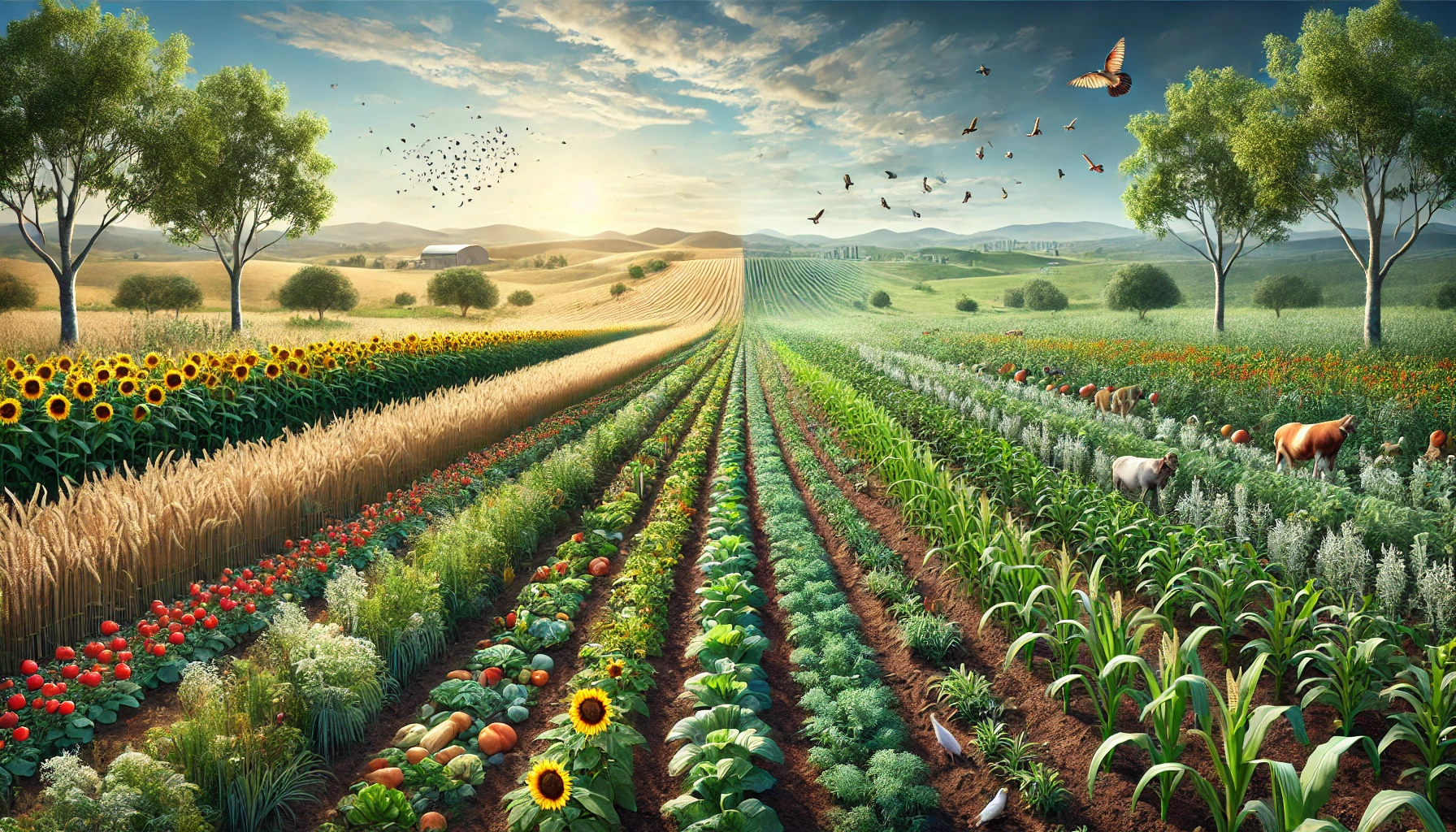How to Get More from Your Regenerative Agriculture & Conventional Farming
Understanding the differences between regenerative agriculture and conventional farming methods can help farmers make better choices for their crops and the environment, as these two approaches aim to grow food but use very different techniques and have different impacts on the soil and ecosystem; for example, regenerative practices focus on improving soil health by using techniques like crop rotation and cover crops, while traditional farming often relies on chemical fertilizers and pesticides, which can harm the soil and reduce its fertility over time, so getting more from your land means knowing how these methods compare and what benefits each might offer.
Choosing sustainable farming methods can lead to healthier crops and a better environment, as regenerative farms focus on conserving and regenerating resources, which not only helps the land but also supports biodiversity and reduces the environmental impact; using methods such as composting, holistic grazing, and integrating cover crops can increase soil fertility and help capture carbon, all of which contribute to a more resilient and productive farm ecosystem, so learning about these practices can provide valuable insights for anyone interested in more sustainable and efficient farming.
Are you ready to explore these methods?
In the article
- Understanding Regenerative Agriculture & Conventional Farming
- Benefits of Regenerative Agriculture
- Implementing Regenerative Practices
- Challenges and Solutions
- Comparing Yields and Productivity
- Case Studies
- Steps to Transition
- Key Takeaways
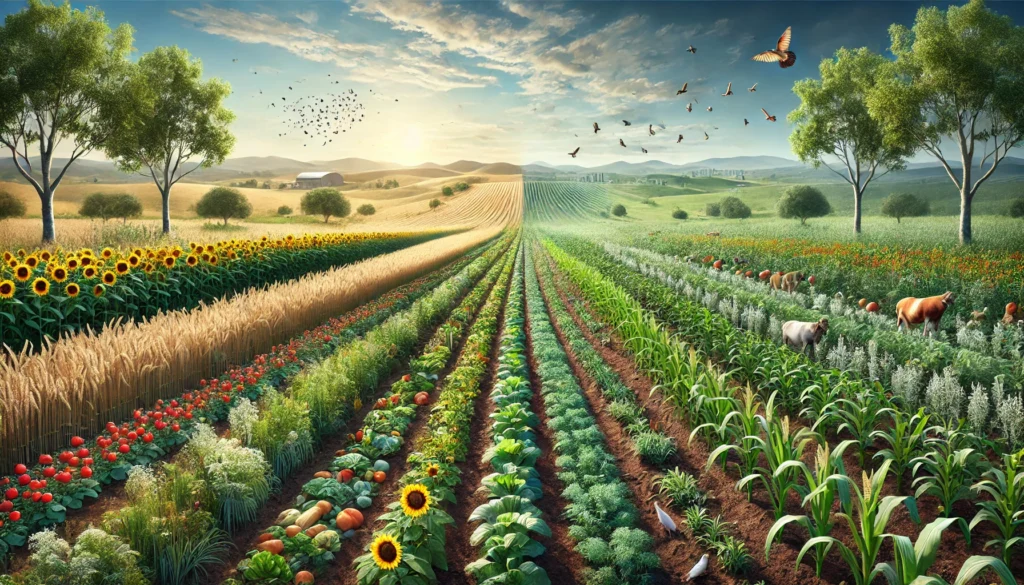
Understanding Regenerative Agriculture & Conventional Farming
Defining Regenerative Agriculture
Regenerative agriculture focuses on improving soil health and nutrient density and increasing biodiversity on farms. Farmers use methods like crop rotation, cover crops, and no-till farming to enrich the soil. These methods help the soil store more carbon, making the farm healthier and more sustainable.
Defining Conventional Farming
Conventional farming relies on techniques like using chemical fertilizers and pesticides for high crop yields. This method aims for maximum production but often harms the environment. Farmers might use the same piece of land for the same crop year after year, which can deplete the soil and reduce its quality.
Understanding the differences between regenerative agriculture and conventional farming helps in deciding the best methods to use. It’s important to know how each type of farming affects the soil and the environment. This knowledge can help farmers make better choices for the future.
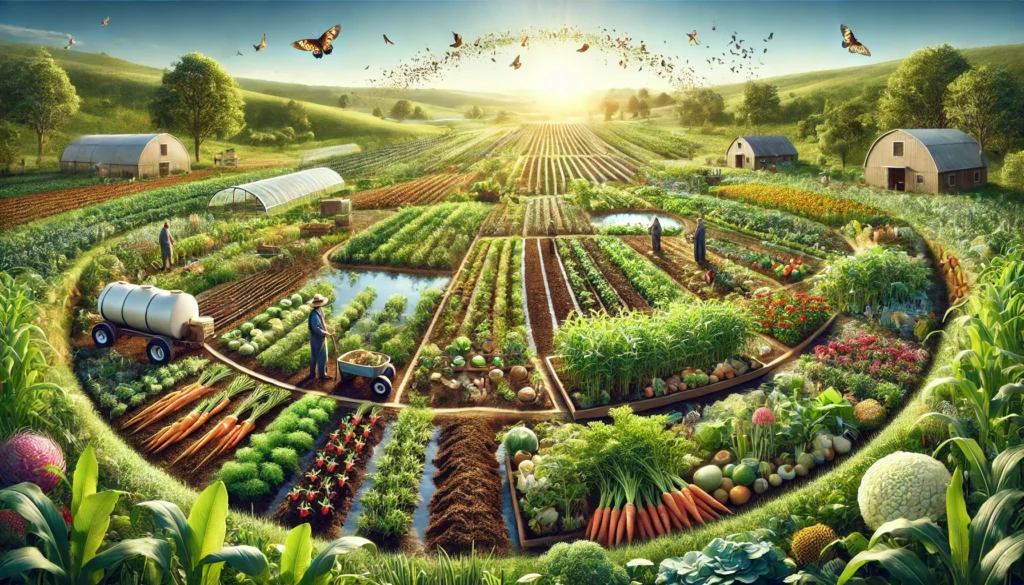
Benefits of Regenerative Agriculture
Soil Health Comparison
Regenerative agriculture improves soil health by adding organic matter and supporting beneficial microbes. It helps the soil retain water and nutrients better, making it more fertile. These methods contribute to healthier plants and better yields.
Conventional farming can degrade soil health over time due to heavy chemical use. These chemicals can kill not only pests but also the beneficial organisms in the soil. This can lead to soil that is less fertile and more prone to erosion.
- Improved water retention in soil
- Enhanced soil structure
- Increased nutrient content
These soil health benefits help plants grow stronger and yield better crops. By focusing on soil health, farmers can produce more food and create a healthier environment.
Environmental Benefits
Regenerative agriculture reduces greenhouse gas emissions and mitigates climate change by sequestering carbon in the soil. This means that carbon, which would usually contribute to global warming, is stored safely in the ground. These methods also help reduce pollution by using fewer chemicals.
Conventional farming, on the other hand, often contributes to pollution and climate change. The heavy use of fertilizers and pesticides can lead to runoff into rivers and lakes, harming wildlife and water quality. By cutting down on chemicals, regenerative agriculture helps create a more sustainable and eco-friendly farming system.
Practicing regenerative agriculture helps create a more sustainable and eco-friendly farming system. Farmers can protect the environment while still growing the food we need.
Economic Benefits
Farmers using regenerative agriculture often save money on chemical inputs and can receive premiums for organic products. They spend less on fertilizers and pesticides, which can be very expensive. By producing organic produce, they can often get higher prices for their products.
While conventional farming may have higher immediate yields, it can lead to long-term soil degradation and increased costs. In the short term, the yields might look better, but over time the soil becomes less fertile. This means farmers have to spend more on chemicals to keep their crops growing.
The sustainable farming benefits of regenerative practices can improve farmers’ profitability over time. By keeping the soil healthy and reducing costs, farmers can make more money in the long run.
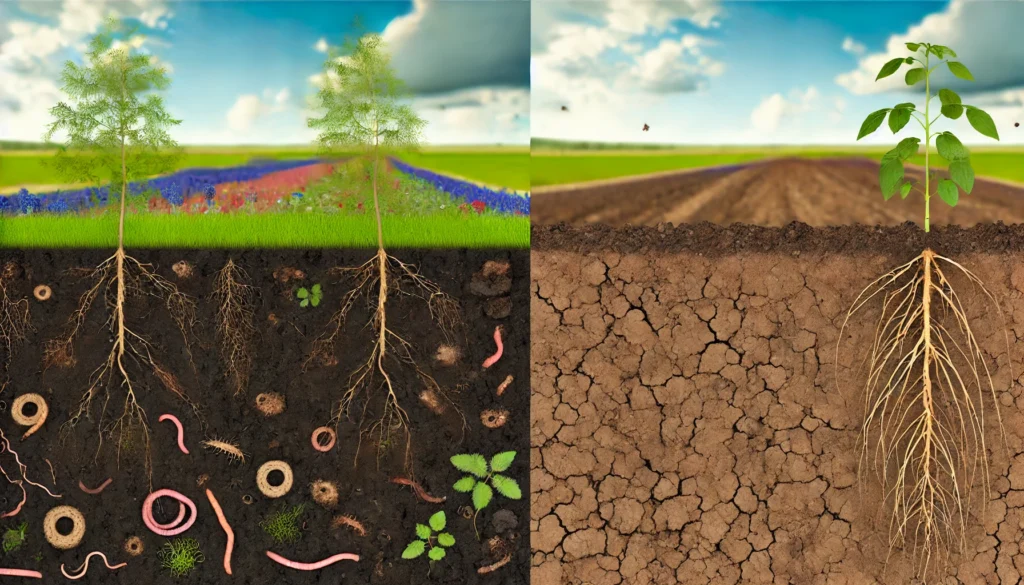
Implementing Regenerative Practices
Cover Cropping
Using cover crops protects soil from erosion and enhances soil fertility by fixing nitrogen. These plants cover the soil when the main crops are not growing, preventing erosion and adding nutrients. Cover crops also help improve soil structure, making it easier for the main crops to grow.
Cover crops also help in controlling weeds and pests without chemicals. They compete with weeds for space and nutrients, keeping them in check. This reduces the need for herbicides and pesticides, creating a healthier farm environment.
Crop Rotation
Rotating crops prevents soil nutrient depletion and breaks pest and disease cycles. By changing the types of plants grown each season, farmers can keep the soil healthy and reduce pests. This practice also contributes to better soil structure and overall crop health.
This practice also contributes to better soil structure and overall crop health. Different crops have different nutrient needs and pest resistance, so rotating them helps balance the soil.
No-Till Farming
No-till farming reduces soil disturbance, preserving soil structure and moisture. By not tilling the soil, it remains intact, which helps it retain water and nutrients. This method also protects the soil from erosion.
It also minimizes erosion and helps sequester carbon in the soil. Less disturbance means less soil erosion, and the soil can store more carbon. This helps reduce the impact of farming on climate change.
Using no-till methods can protect soil and improve crop resilience. Crops grown in no-till soil often have deeper roots and can withstand drought and other stresses better.
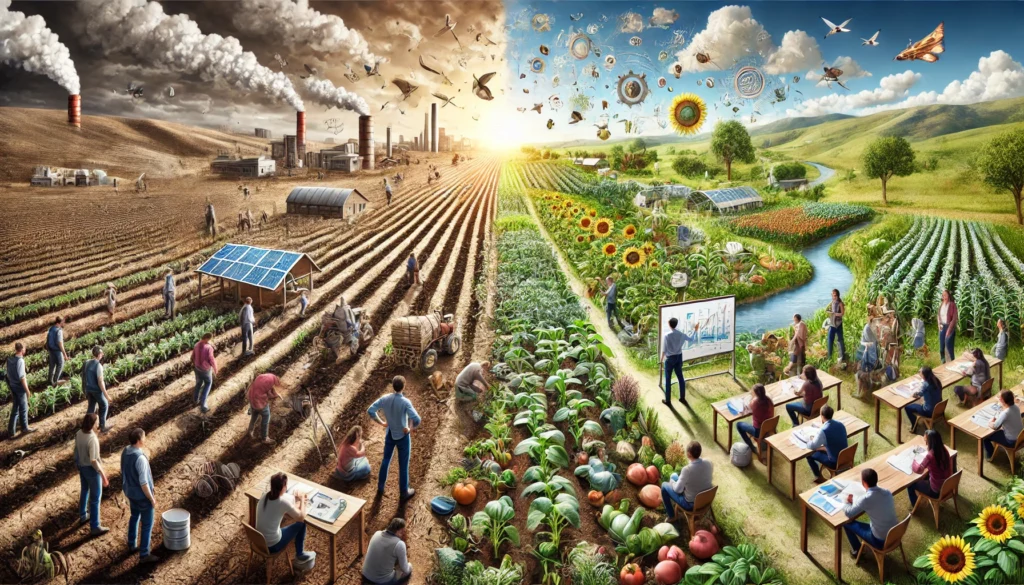
Challenges and Solutions
Transitioning from conventional to regenerative farming poses challenges but offers long-term gains. Farmers may face difficulties at first, but the rewards are worth it.
Initial Costs
Starting regenerative practices may involve costs for new equipment and seeds. Farmers might need to buy cover crop seeds, no-till planters, or other tools. These expenses can be a barrier for some.
Farmers can seek financial assistance or grants to offset these initial costs. Many organizations offer support for those transitioning to regenerative farming. These funds can help cover the expenses of starting new practices.
Over time, a reduced need for chemical inputs can balance out these initial expenses. As farmers spend less on fertilizers and pesticides, they can save money and recover the initial investment.
Learning Curve
Adopting new farming practices requires time and effort to learn. Farmers need to understand how to use cover crops, rotate crops, and practice no-till farming effectively. This can be challenging, especially if they have been using conventional methods for a long time.
Farmers can attend workshops or join networks with other regenerative agriculture practitioners to share knowledge. These communities provide valuable support and resources. Sharing experiences can help farmers overcome obstacles and improve their practices.
Continuous learning and adaptation are key to success in regenerative farming. As conditions change, farmers need to be flexible and willing to try new methods. This approach helps them stay successful in the long run.
Market Access
Finding markets for organic or regenerative products can be challenging initially. Farmers need to find buyers who value their sustainable practices. This can be difficult, especially in areas where conventional products dominate the market.
Building relationships with local buyers and participating in farmers’ markets can help. Local buyers often appreciate fresh, sustainably-grown products. Farmers’ markets provide a direct way to reach customers and tell their stories.
Promoting the sustainable farming benefits of regenerative products can attract more customers. Many people want to support eco-friendly practices. By highlighting the environmental and health benefits of their products, farmers can build a loyal customer base.
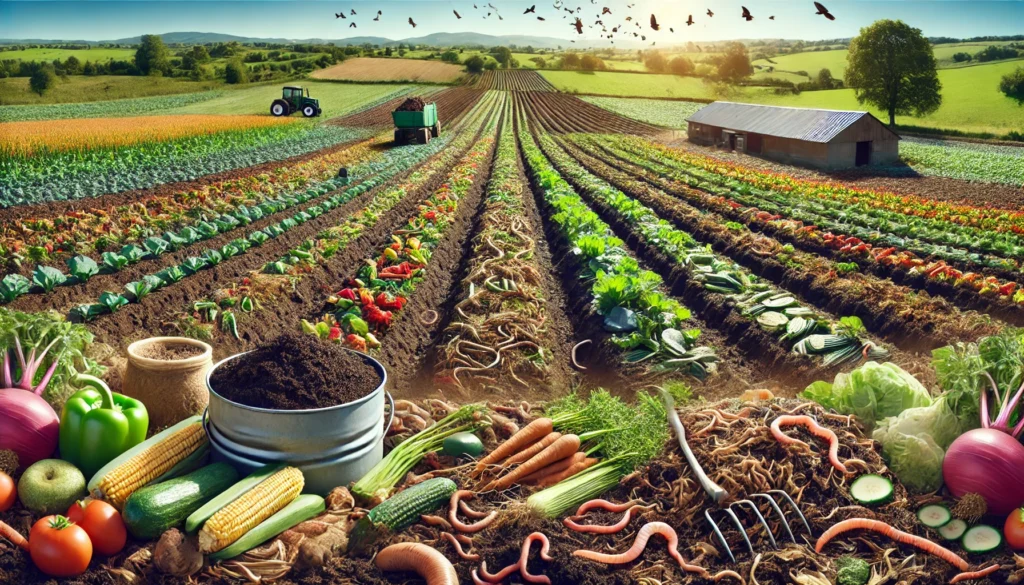
Comparing Yields and Productivity
Short-Term Yields
Conventional farming often produces higher short-term yields due to intensive inputs. The use of chemical fertilizers and pesticides can result in large harvests quickly. However, this approach may not be sustainable in the long run.
Long-Term Productivity
Regenerative agriculture creates healthier soils, leading to sustained productivity and resilience against environmental stresses. Healthier soil means plants can grow better and withstand droughts, pests, and diseases. This leads to consistent yields over time.
Balancing Yield and Sustainability
Farmers need to balance immediate yields with sustainable practices for long-term farm health and productivity. Using regenerative methods can ensure both current and future crop success. This approach helps farmers remain productive and profitable while protecting the environment.
Using regenerative methods can ensure both current and future crop success. Farmers can produce good yields now and keep the soil healthy for future crops. This balance is crucial for sustainable farming.
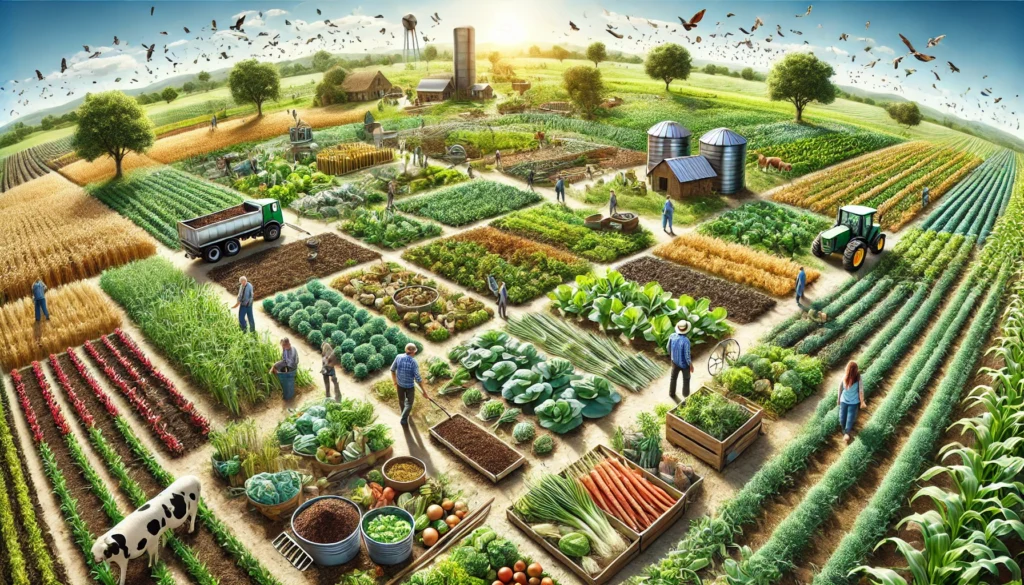
Case Studies
Real-world examples of farmers who successfully transitioned to regenerative practices can provide inspiration. These stories show that making the switch can lead to positive results.
Farmer John’s Journey
John switched from conventional to regenerative agriculture and saw improvements in soil health and crop yields. He noticed that his soil retained more water and had more nutrients. This led to stronger, healthier plants and better harvests.
His farm became more resilient to droughts and pests over time. With healthier soil, John’s crops could withstand weather extremes and pest attacks better. This resilience reduced his need for chemicals and saved him money.
John’s story highlights the benefits of investing in soil health and sustainable practices. By focusing on the long-term health of his farm, he created a more sustainable and profitable operation.
Farmer Emily’s Experience
Emily introduced cover crops and crop rotation to her farm. She noticed a significant decrease in the need for chemical inputs and saw better soil fertility and crop diversity. Her fields became healthier, with a wider variety of plants and fewer pests and diseases.
She noticed a significant decrease in the need for chemical inputs and saw better soil fertility and crop diversity. This allowed her to save money and grow more different types of crops.
By focusing on regenerative practices, Emily achieved a more sustainable and profitable farming operation. Her farm became an example of how these methods can lead to success.
These stories show that transitioning to regenerative agriculture can lead to long-lasting positive changes. Farmers like John and Emily demonstrate that it’s possible to improve soil health and crop yields while protecting the environment.
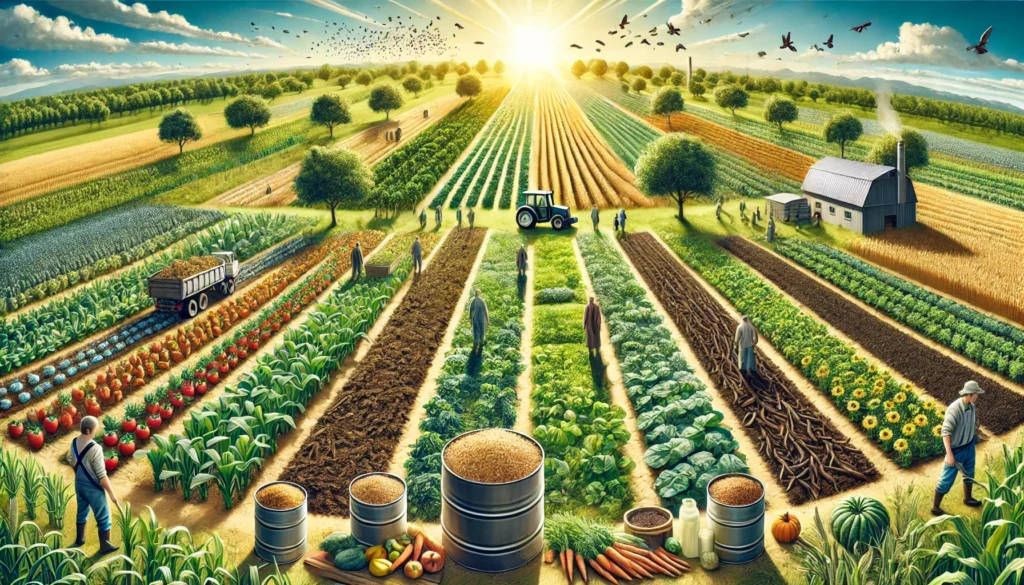
Steps to Transition
Assess Current Practices
Start by evaluating current farming methods and identifying areas for improvement. Check the health of the soil, the types of crops grown, and the use of chemicals. This assessment helps farmers understand what changes will be most beneficial.
Understanding the current state of soil health and crop diversity is crucial for planning the transition. Knowing what needs to be improved helps set clear goals and steps for change.
Plan and Implement Changes
Develop a step-by-step plan to introduce regenerative practices gradually. Starting small can make the transition easier and more manageable. Farmers can begin with one or two new practices and expand as they learn.
Start with cover cropping or crop rotation and expand to no-till farming and other methods over time. This gradual approach helps farmers adjust to new methods and see early benefits.
Monitor and Adapt
Regularly monitor soil health and crop performance to assess the impact of regenerative practices. Keeping track of changes helps farmers see what’s working and what needs adjustment.
Adjust methods as needed to address challenges or improve outcomes. Flexibility is key to success in regenerative farming. As conditions and needs change, farmers should be ready to adapt.
Continuous monitoring and adaptation ensure the long-term success of regenerative farming. By staying aware and responsive, farmers can maintain healthy, productive farms.
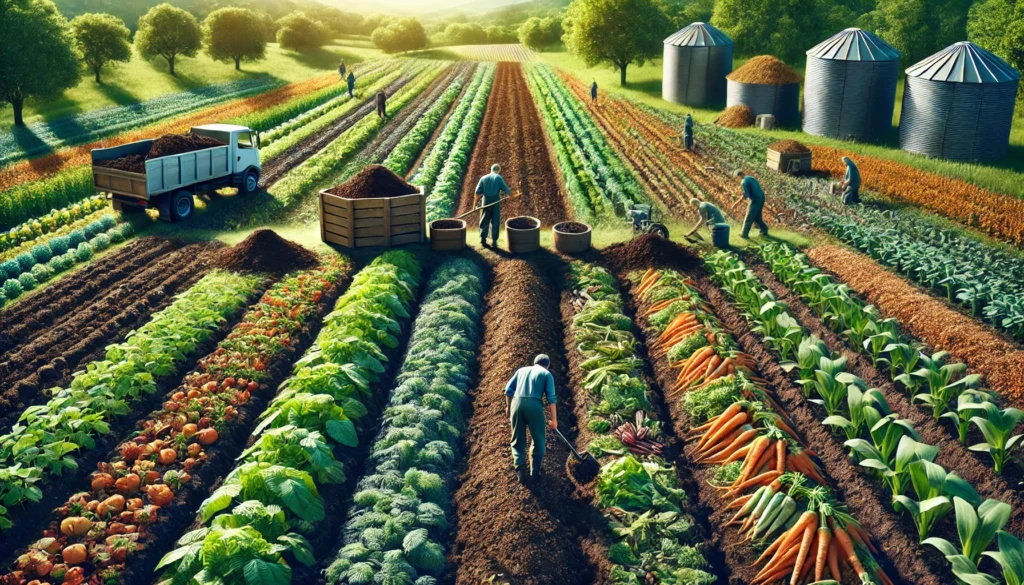
Key Takeaways
Emphasizing Soil Health
Maintaining and improving soil health is at the heart of regenerative agriculture. Healthy soil supports higher crop yields and resilience to environmental stresses. Focusing on soil health creates a strong foundation for sustainable farming.
Sustainable Practices Lead to Long-Term Gains
Although there may be initial challenges, adopting regenerative practices offers long-term benefits for both the environment and farm productivity. These methods help create healthier, more productive farms that can withstand challenges.
Supporting the Farming Community
Connecting with other farmers and sharing knowledge and experiences helps improve regenerative practices and sustainability. Working together makes the transition easier and more effective. The farming community can be a great source of support and resources.
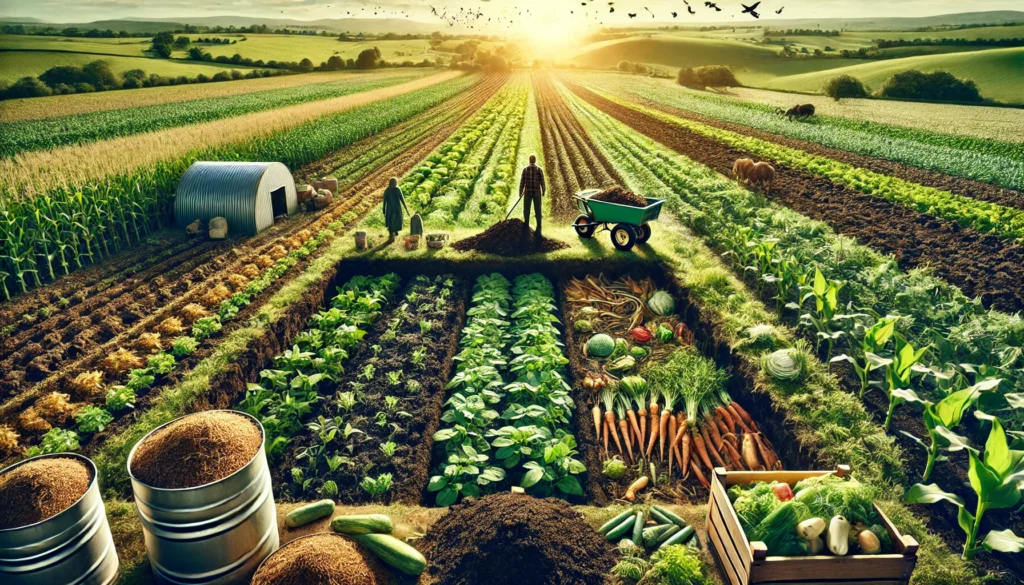
Make a Positive Impact
By learning about different farming methods, you can help make a big difference. Using better practices helps keep soil healthy and protects our planet. You can choose to support farms that care about the environment. When you do, you help keep our food safe and tasty.
Talking to your family and friends about what you learned can inspire them to care too. Support local farms that use good methods. Consider growing some of your own food using these ideas. Every little step helps make a big change.
Don’t stop here. Keep learning and sharing what you know. Follow pages that teach about good farming. Ask questions and stay curious. Together, we can help make farming better for everyone, from the ground up.
